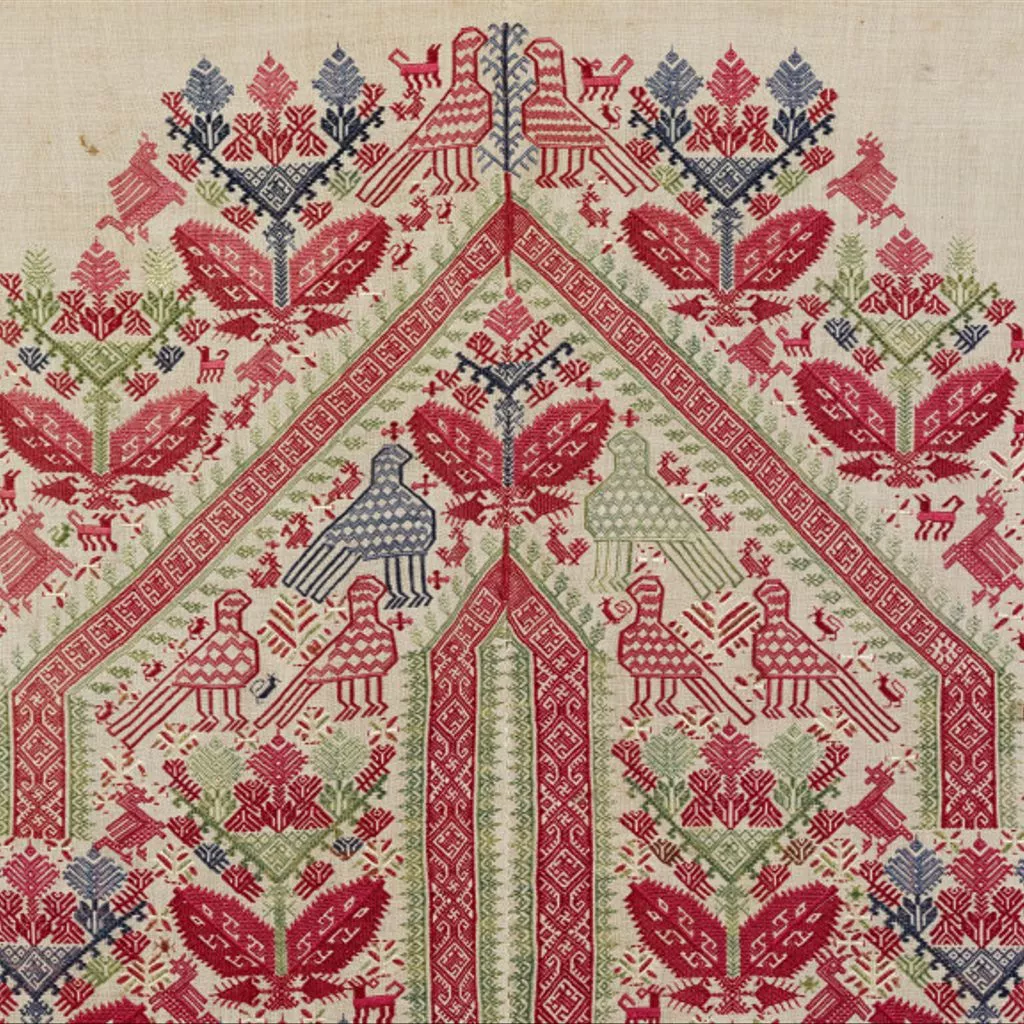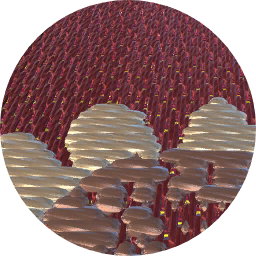Description
embroidered, 1700s, Greek; Dodecanese, Patmos
Bed door curtain
1700–1800
In houses on the Greek island of Patmos, the main room was usually divided by a wooden partition. This screened off the principal bed and had an opening to allow people to pass through. The opening was hung with a divided curtain, often elaborately decorated with embroidery in distinctive local patterns. In this curtain the division has been sewn up.
Greece (Dodecanese Islands, Patmos)
Linen embroidered in silk
Given by Professor R.M. Dawkins
[09/12/2015]
Bed curtain, embroidered in red blue green and white silk on linen, in darning, satin and chain stitches. Up each side are vertical bands each with three vertical rows of alternating 'King' and 'Queen' patterns (Wace's designation for the patterns derived from pair of leaves surmounted by birds, trees and/or miniature flowers). The gable has King and Queen pattern, birds and animals. At the bottom are three horizontal rows of King and Queen pattern. These motifs are described as broad leaf (platyphyllenio) and branch (spitha) motifs in the Benaki Museum catalogue.
The front opening has been sewn up.
Patmos is one of the northernmost islands of the Dodecanese group of Greek Islands. The tradition on other islands in this area was to use a bed tent, often the spectacular centrepiece of the room's decoration, as the style of domestic architecture produced a square bed platform set in a corner of the room, requiring a tent rather than a simple curtain to provide privacy.
In Patmos, however, the room was divided by a wooden partition, with the bed placed behind it, so the opening in the partition was filled with a curtain like this one, with a central opening (which has here been joined). Such curtains typically had gables in their decoration at the top to reflect their function as a doorway.














